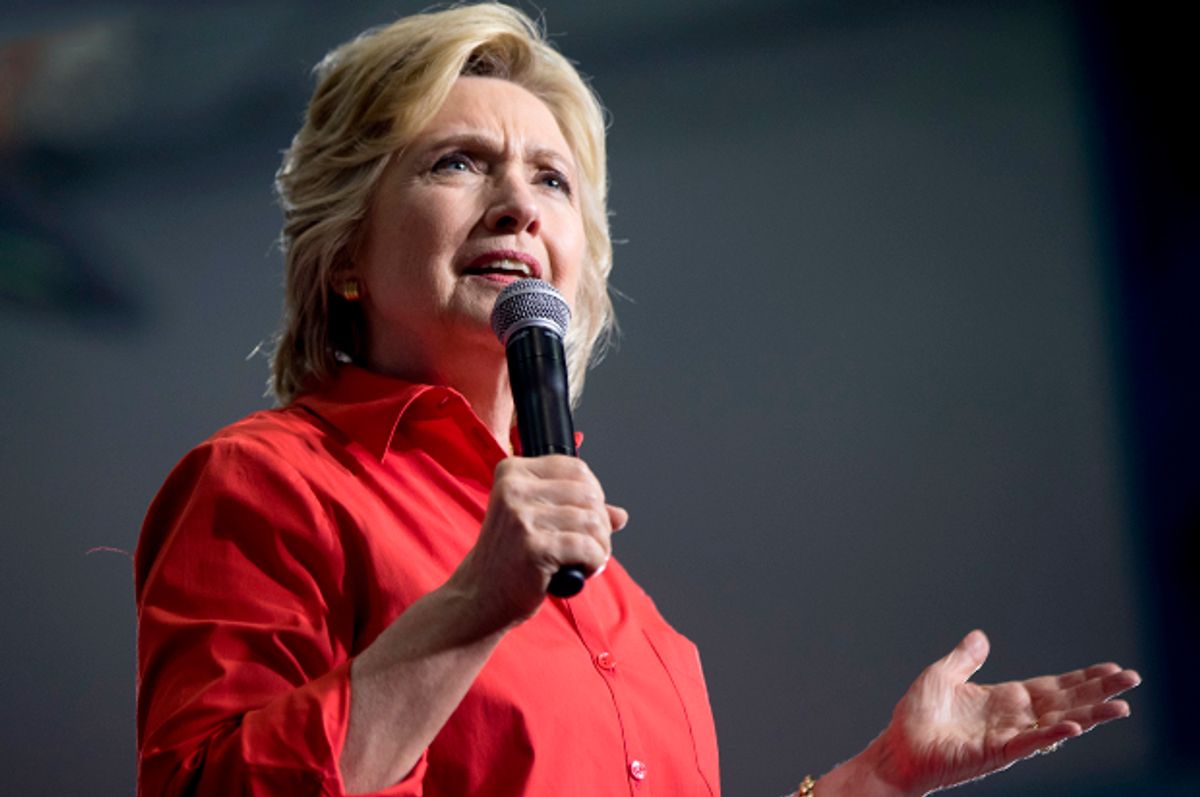Watching the final night of last week’s Democratic National Convention, one couldn’t help but notice how the tone and tenor of the event whipsawed back and forth. You had speakers like Rev. William Barber and Khizr Khan speaking to traditionally liberal themes like social justice and inclusivity. They shared the stage with Republican voters (including a Chamber of Commerce policy analyst) who were aghast at their party’s nominee, and a retired Marine general who gave a loud, hyper-patriotic, and bluntly militaristic speech. The pitch was extremely broad, aiming at voter groups that ordinarily don’t find themselves voting for the same candidate.
Hillary Clinton’s speech accepting the nomination followed this pattern. Early on in her remarks, Clinton acknowledged and thanked Sen. Bernie Sanders for his hard-fought primary campaign, and she spoke directly to the young, liberal voters of the Sanders revolution: “I want you to know, I've heard you. Your cause is our cause. Our country needs your ideas, energy, and passion.” She also made direct appeals to disaffected Republicans, deliberately segregating their party’s nominee from GOP lodestar Ronald Reagan and inviting them to Team Clinton. “You heard from Republicans and Independents who are supporting our campaign,” she said. “I will be a President for Democrats, Republicans, and Independents.”
Ordinarily this strategy would be ludicrous, given the high degree of polarization within the electorate. But it might actually work this cycle, owing to the uniquely loathsome character of her opponent, Donald Trump. As the divisiveness of the Democratic primary (and the persistent protesting at the convention) showed us, Clinton is not a natural fit for the young, liberal voters who represent the future of the party. Nor is she the first choice of moderate Republican voters. But for the moment, she stands out as the only real option for voters in both groups who may not necessarily like Hillary, but can’t abide by Trump and don’t want to risk throwing him the presidency. And her campaign is trying to exploit this dynamic to the fullest extent, casting Hillary as the unity candidate who, per the official slogan, will make us “stronger together.”
As I wrote last week, it’s a strategy that certainly doesn’t lack for boldness, and there’s a high likelihood that it will power Hillary to the presidency. But it also comes with considerable long-term risk, given that it’s extremely difficult (if not impossible) to craft a governing agenda that leaves so broad a coalition intact.
The agenda Clinton has laid out is, of course, designed to appeal to Democrats: gender equality, increased social spending, higher taxes on the rich, etc. The disaffected Republicans and Republican-leaning independents gravitating towards Hillary right now aren’t going to agree with much of what she’s proposing, or any of it. Their primary motivation seems to be preventing the country from falling into the hands of an unqualified maniac. But what happens if, four years from now, the GOP manages to pull itself together from a post-Trump collapse and nominate a candidate who is more in line with what these Republicans are used to? They’re not going to stick with Hillary; they’re going to bolt back to the GOP to get their tax cuts and deregulation.
The worst thing that President Hillary Clinton could do would be to nudge her agenda towards the center to appeal to these right-leaning voters who have no real attachment to her. Doing that would risk alienating the liberal contingent of her own party that already viewed her warily. Hillary already has her work cut out for her in trying to keep the peace with the Democratic left wing, and the second she starts diluting her policies so as not to scare off Chamber-Of-Commerce Republicans, those liberals will bolt.
So when Hillary says she’ll “be a President for Democrats, Republicans, and Independents,” she’s not describing a successful long-term political strategy. Being the president for everybody works for now because voters across party lines are actually motivated to unite behind her in defiance of the unique and terrible threat to the county posed the nominee from the other major party. But if she pursues an agenda that attempts to keep all those groups happy and inside the Hillary tent, she’ll likely accomplish little beyond alienating both the leftmost and rightmost elements of that coalition.



Shares